Rainy weather is often a damper for many motorcyclists. The idea of slippery roads, poor visibility and battling against the wet weather conditions can certainly dampen the joy of riding. But with the right attitude, the right equipment and the right technique, your motorcycle tour doesn't have to be a washout, even in dripping wet conditions.
Riding a motorcycle in the rain can be safe and - dare we say it - even fun, as long as you are well prepared. But what exactly should you pay attention to in advance if you want to ride your motorcycle in the rain, and what adjustments are also useful during the ride?
We provide you with valuable information on these and other questions and also give you our top 10 safety tips to ensure that you stay safe and untroubled in the saddle when riding your motorcycle in the rain.
First of all, the question: Should I even ride a motorcycle in the rain?
Well, while some experienced bikers have no problem riding in cold and wet weather, the thought of riding a motorcycle in the rain can be very frightening for a complete beginner. Novice bikers in particular often fear the reduced visibility and grip when riding on rainy roads.
Should I even ride a motorcycle in the rain? Isn't it dangerous? Will I get completely wet? All these questions and fears are of course not unfounded, because riding a motorcycle in the rain definitely requires more attention and caution, but with the right preparation and attitude it is not necessarily an unavoidable accident potential.
Riding in the rain, on the other hand, actually sharpens your skills as a rider enormously. If you haven't had much experience riding a motorcycle in the rain, start with short distances and build up slowly. This will allow you to get used to the changing conditions and develop your skills safely.
Nevertheless, if you feel unsafe or even a wet road causes you a certain amount of anxiety, then perhaps a riding safety course would be worth considering to give you the confidence to enjoy riding in the rain.
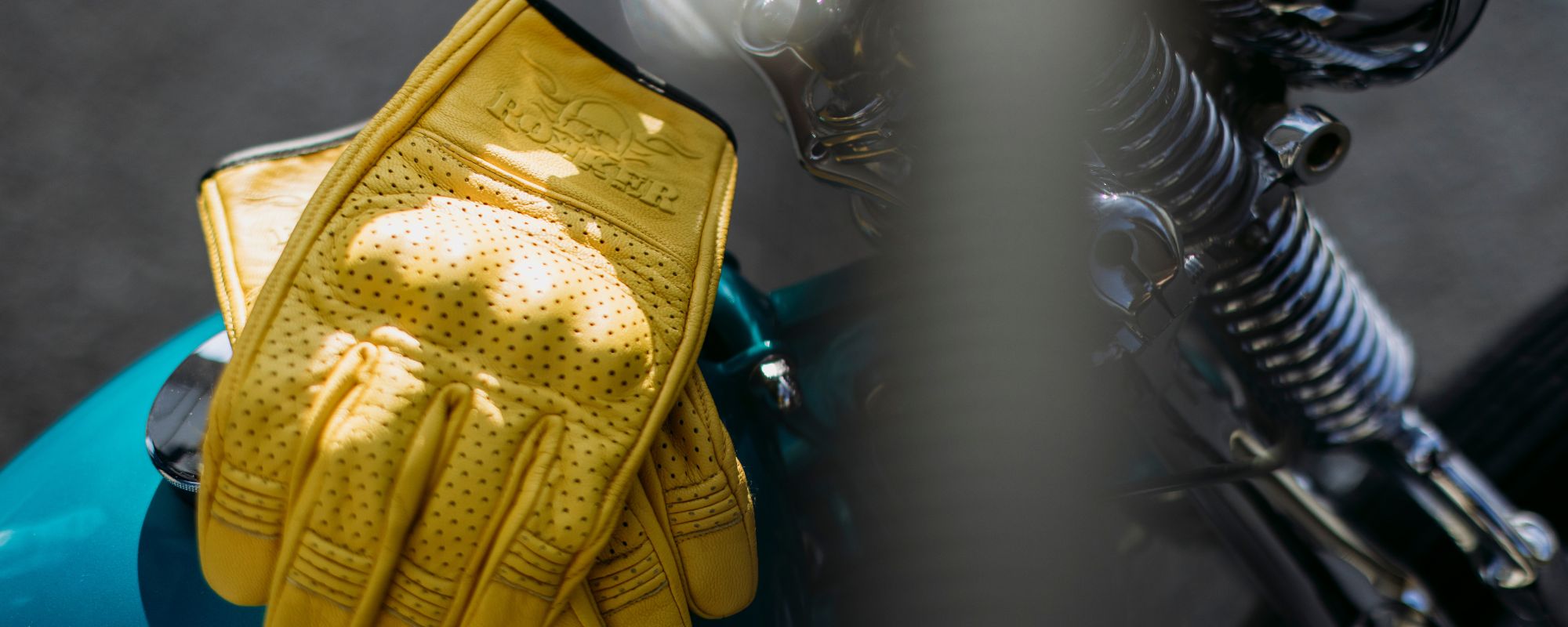
Riding a motorcycle in the rain - but only with the right rain gear
Riding a motorcycle in the rain can quickly become an uncomfortable experience, especially in normal everyday or biker clothing. Waterproof equipment is therefore the be-all and end-all when it comes to riding a motorcycle in the rain. And the right rain gear is the top priority here, so that you can ride casually, but also dry, even in dirty weather:
That's why we've listed some essential pieces of equipment for rain tours below:
-
Breathable motorcycle pants & jackets
Really high-quality and well-made motorcycle jackets and pants, such as the stylish and water-repellent ROKKER Black Jacket, or our highly abrasion-resistant and even 100% waterproof REVOLUTION jeans, not only protect you from getting wet, but also from heat build-up thanks to breathable features.
-
Grippy gloves
Waterproof gloves that not only keep your hands dry but also warm are also essential. Pay particular attention to models with good grip so that you can always keep control of your bike.
-
Weatherproof shoes
Investing in waterproof, all-weather motorcycle boots, such as our CE-certified and water-repellent Urban Rebel motorcycle boots, is a great option in any case, as they make it unnecessary to stop and change your boots in wet conditions. But please note that the boots need to be well maintained with grease so that they can withstand the wet effectively.
-
Helmet & visor
And last but not least: a visor that doesn't fog up. After all, who wants to ride around blind? If you're riding in the rain, a helmet with an anti-fog visor or even a visor with an electric defrost function is worth its weight in gold.
The question of the visor should not be underestimated either: Avoid tinted visors when riding in the rain or at least have a clear spare visor with you. Visibility often changes quickly and a dark visor can be more of a hindrance than an advantage in the rain or at dusk.
Extra tip - be visible
Visibility is reduced for all riders in rainy weather. Remember that rain protection should therefore ideally be colored and contain highly reflective elements, as these can save lives in the worst-case scenario.
Adapted riding technique: the safest way to ride your motorcycle in the rain
An adapted riding style is essential when riding a motorcycle in the rain. Smooth or very special new asphalt, puddles and road markings can quickly turn into a slippery ride. The magic word here is therefore: ride with foresight.
However, as riding in the rain can significantly improve your skills as a motorcyclist, we will give you our 10 most valuable safety tips below so that you too can navigate your motorcycle safely from A to B in the rain:
Our 10 safety tips for riding your motorcycle in the rain
TIP 1 - Technical preparation of the motorcycle:
An important aspect that is often overlooked is the appropriate maintenance of your motorcycle for rainy conditions. Regularly check the tire tread depth, the correct air pressure and make sure that your lights are working properly. And of course, the brakes should also be in perfect condition to get you safely through the rain.
TIP2 - Ride carefully in the first few minutes of a rainstorm:
Remember that the worst time to ride a motorcycle in the rain is in the first few minutes of a rainstorm. Oil and dirt that has accumulated on the road while it was dry tends to "float away" in the first few minutes when the rain starts. This makes the road particularly slippery for a short time.
For this reason, it is never a bad idea to take a short break when a rainstorm starts, or to delay your departure to avoid being on the slippery road.
TIP 3 - Avoid hasty steering, accelerating or braking:
Especially if you want to ride a motorcycle in the rain, you should make all your steering, accelerating and braking movements more gradual and, above all, not too hasty.
✓ Take your foot off the gas gently and always brake gently and in a controlled manner.
✓ Always accelerate slowly and steadily and stop gradually.
✓ Turn your bike with extra care at a lower speed.
✓ Avoid braking in puddles or on markings where there is less grip.
All this will help you to keep your tires in contact with the road surface.
TIP4 - Find a safe driving line & double the distance to the vehicle in front:
Although these two tips may seem very obvious, they are often not used in everyday life. For example, doubling the distance to the vehicle in front gives you more time to react if they brake or swerve abruptly and also gives you enough space around you to take evasive action if necessary.
Lane choice can also be a decisive safety factor. Dry asphalt offers superior traction and maneuverability. So make sure that you continuously position yourself in the driest section of the lane (typically in the tire tracks of the rider in front, where there is less standing water) and avoid any lanes with puddles or even oil slicks.
TIP5 - Beware of aquaplaning on wet asphalt:
Caution is advised when riding through deep pools of water. Remember that when riding a motorcycle in the rain, it is important to maintain grip to avoid hydroplaning. If you ride through standing water and puddles, your tire can ride on the surface of the water like water skis and lose contact with the pavement. This is much more likely to happen with worn tires.
If you see standing water on the road ahead, avoid it if you can. Otherwise, roll gently off the gas, safely reduce your speed, keep your bike as upright as possible and avoid any throttle or braking movements while riding through the puddles.
Standing water is also particularly dangerous on the highway, where speeds prevent you from slowing down in time. Here you should always keep an eye on the cars in front of you and look out for their signs of splashing water in order to recognize tricky spots in advance.
TIP6 - The art of cornering in wet conditions:
Bends are particularly treacherous in wet conditions. Here, less is more.
Reduce your lean angle by increasing the cornering radius. This keeps more tire surface in contact with the road, which gives you more grip. Also, be particularly careful in winding areas when it rains after a long dry spell, as oil and dirt can collect on the road surface and increase the risk of skidding.
TIP7 - Be careful at junctions & traffic circles:
Junctions are dangerous enough when you're riding your motorcycle, and unfortunately the rain only makes these areas even trickier. This is because junctions can be a collection of hazards: slippery oil slicks where cars stop and idle, lots of wet lane lines that can become as slippery as ice and, of course, numerous drivers who may not be as attentive as you.
Roundabouts are particularly nasty and can be slippery not only at the entrances and exits, but throughout the entire circle. Approach slowly so you don't have to brake suddenly, stay calm and limit your lean angle so you come out the other side upright.
TIP8 - React cautiously to sudden surprises:
When it's wet outside, situations that are almost harmless in the dry can turn into unpleasant surprises. So always keep an eye out for
- fallen leaves, which can be as slippery as ice (especially in the fall) and
- always ride your motorcycle carefully through areas such as traffic lights, stop signs or similar places where cars stop and wait, as the likelihood of an oil-smeared lane is much higher here.
- Always have a stable position and sufficient traction when you come to a stop and pay attention to where you put your foot down so that it doesn't slip.
TIP 9 - Recognize particularly slippery danger spots:
Whether it's persistent rain or the first rain after a long dry spell - both types of weather open up further sources of danger on the roads, which can only become particularly slippery when it gets wet.
As not all road surfaces are the same and especially not during rain showers, look out for surfaces that can become ultra-slippery when wet, such as
- manhole covers
- crosswalks
- bridge gratings
- cobblestones
- railroad tracks
- Road markings
These and similar areas require special attention, as they can impair your tire grip. Therefore, always keep the bike as upright as possible when riding on such slippery surfaces and avoid any steering, accelerating or braking movements.
TIP 10 - Always ride smarter, not faster:
Especially when riding in the rain, we recommend that you always know and take into account your own limits and comfort levels. The principle here is: safety before pride.
It is perfectly acceptable to wait to ride if necessary - so never let anyone convince you otherwise or put you under pressure. A smart and prudent rider will allow a little extra time for unexpected weather conditions rather than testing their limits.
It is therefore better to build in some flexibility so that you have a plan B up your sleeve. If you feel uncomfortable or nervous at any time during the ride, do not hesitate to stop so that your fear does not overwhelm you or even cause an accident.
With these adapted riding techniques and safety tips, you can significantly increase your safety when riding a motorcycle in the rain and always stay in control of your bike so that nothing stands in your way on a tour in the rain.
What should you do AFTER riding your motorcycle in the rain?
After the ride is before the ride. Now that you have ridden for miles through the drizzle or heavy rain and you have finished your extensive ride in the rain, it is highly recommended that you wash your bike thoroughly. After all, rain doesn't just mean water, but also dirt, salt and other impurities that can stick to your bike and you certainly want to avoid this on your next ride.
That's why you should first check your bike meticulously for external damage, because nothing would be more annoying than discovering afterwards that brakes, tires or lights are scratched or damaged. And you can find out step-by-step how to make your steel steed really shine again in our blog article " Wash your motorcycle like a pro.
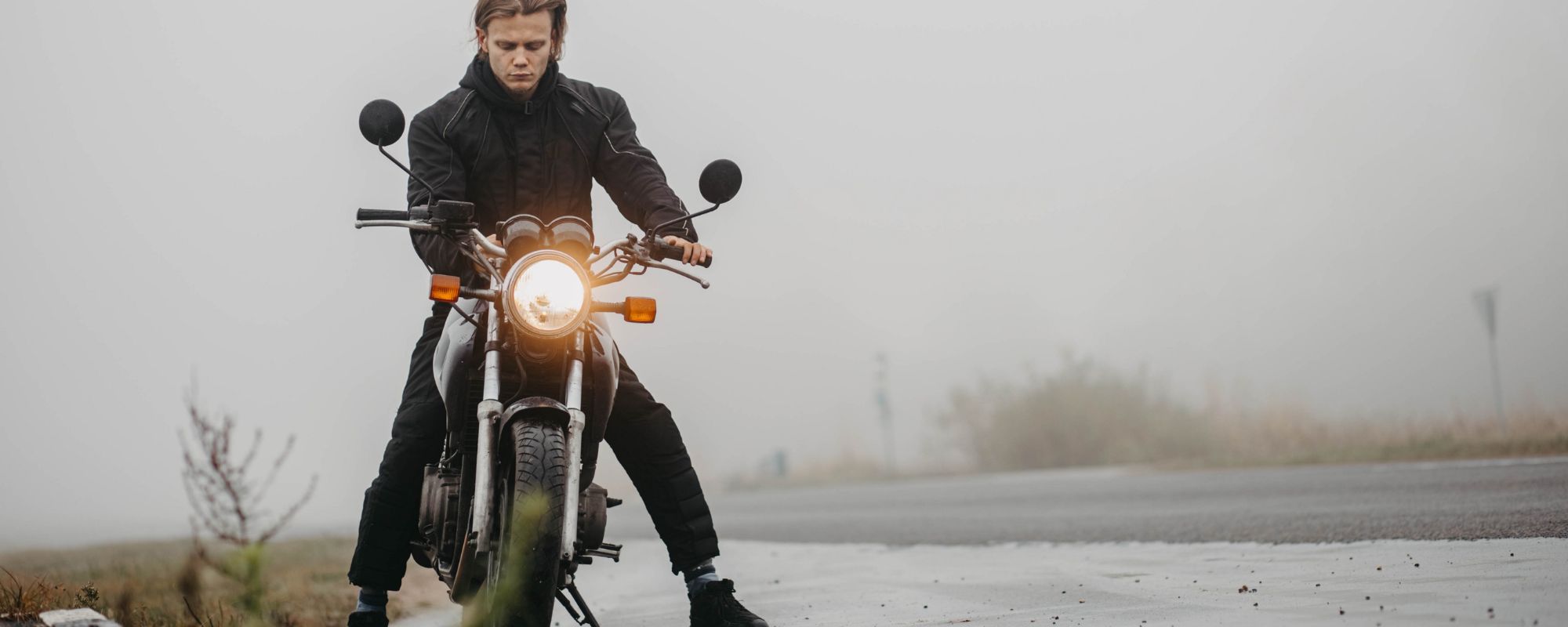
CONCLUSION: With our tips, your motorcycle will cope with rain, drizzle & co. without any problems
Riding a motorcycle in the rain is undoubtedly a challenge, but with the right preparation and attitude, it doesn't have to be an obstacle. Investing in waterproof clothing, well thought-out technical preparation of your bike and paying attention to the road conditions play a key role in ensuring that you don't lose the fun of riding even in rain, drizzle and the like. By relying on high-quality equipment, adapting your riding technique to the wet conditions and always riding with foresight, you can stay in control of your bike and cruise safely to your destination.
And with premium products from ROKKER, you are not only safe and stylish on the road, but also well equipped for the challenges of the weather. Our motorcycle clothing not only offers you protection from the wet, but also helps you stay visible when the conditions are less than ideal.
It's therefore worth investing in high-quality equipment that won't let you down. Because in the end, it's the combination of the right attitude, the right equipment and an awareness of your own safety that makes every tour - whatever the weather - a special experience.
FURTHER TOPICS & PRO TIPS CAN BE FOUND IN THE ROKKER GUIDE!

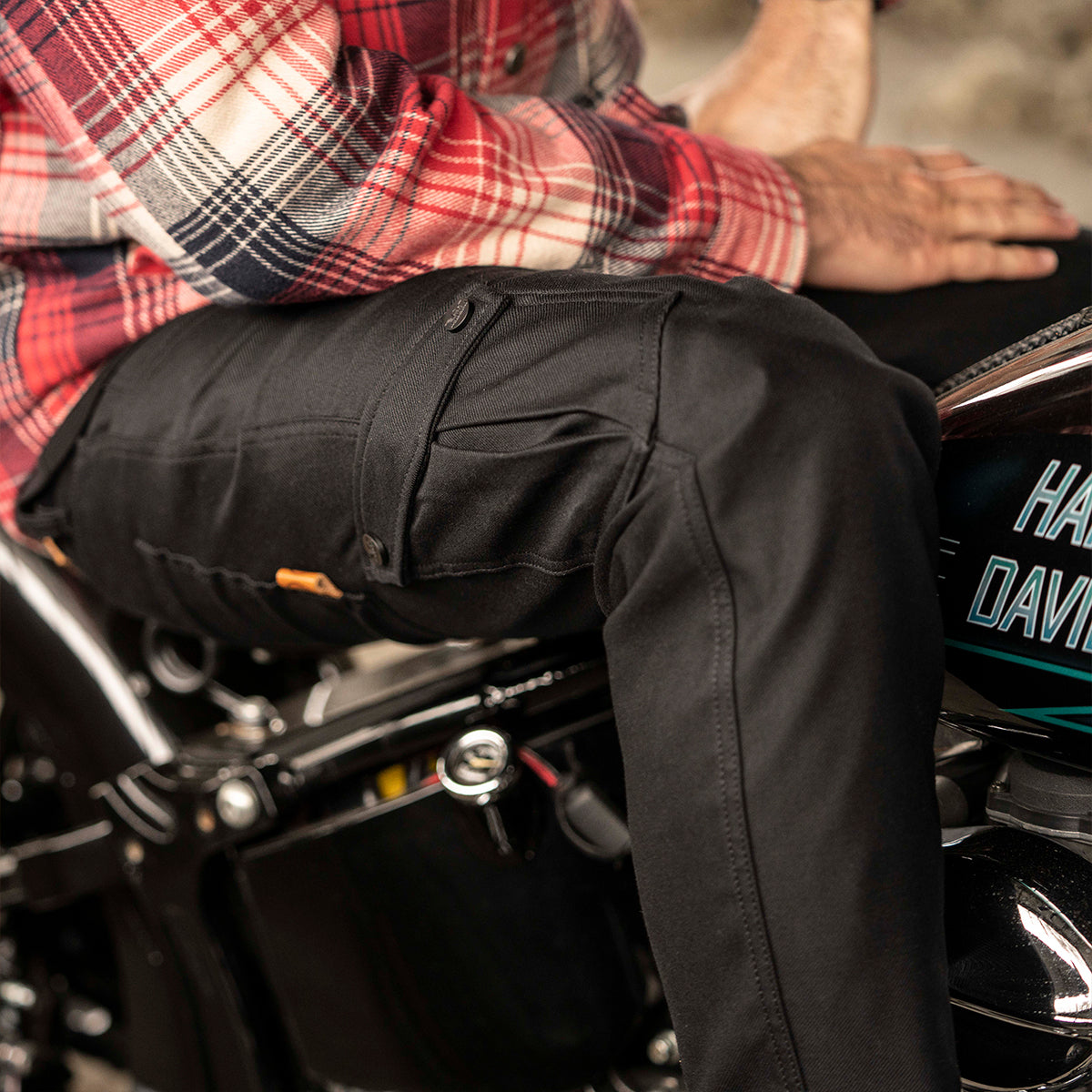
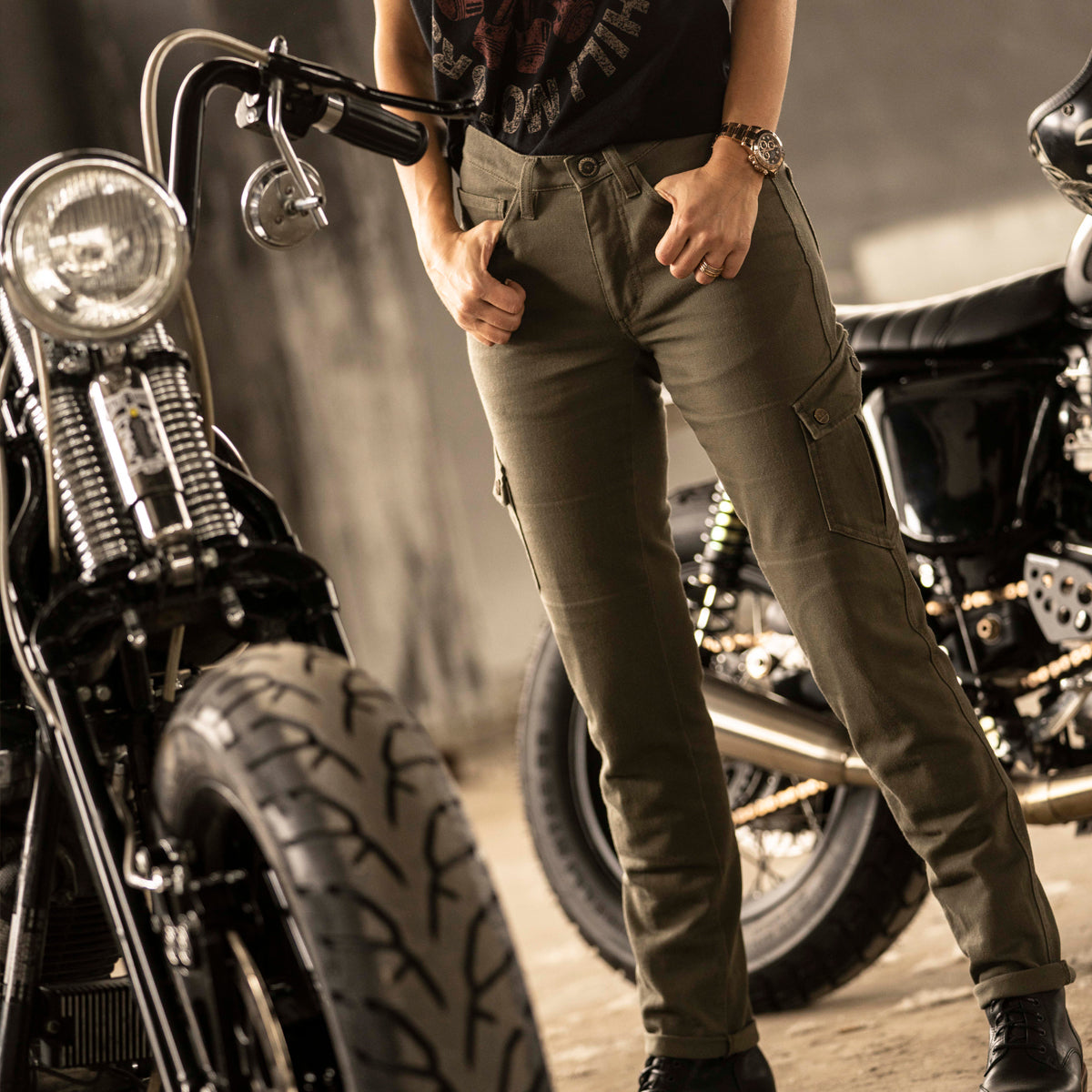
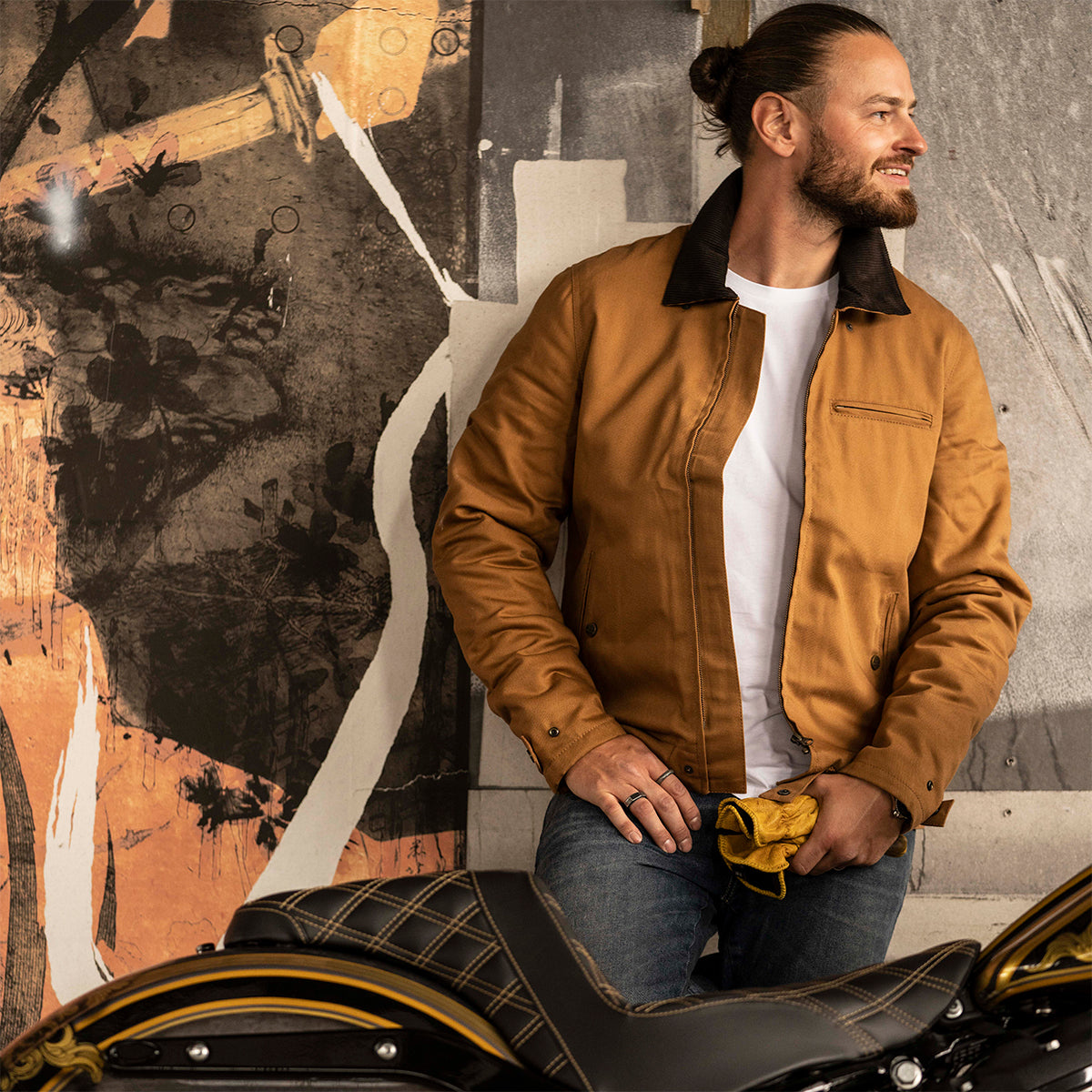

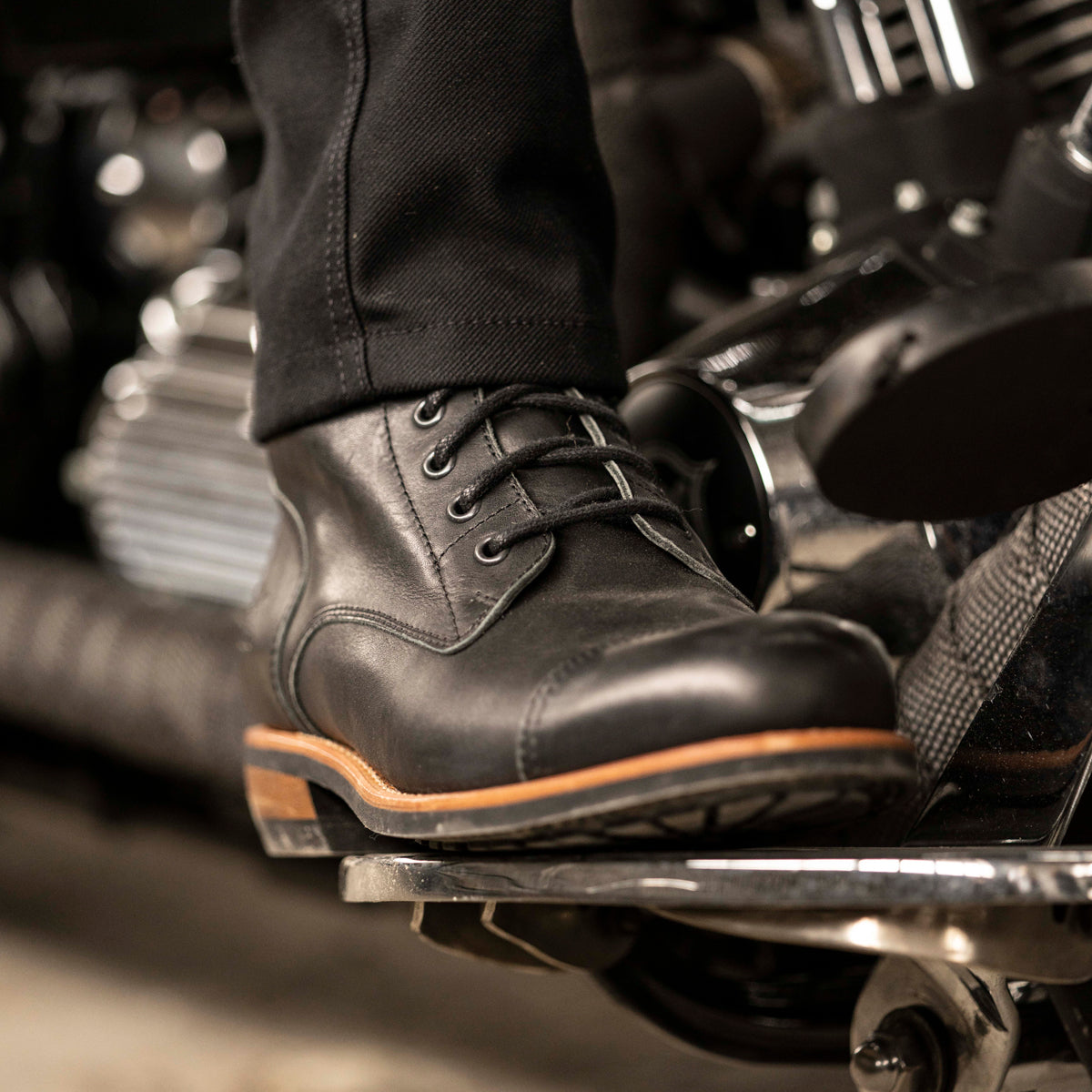
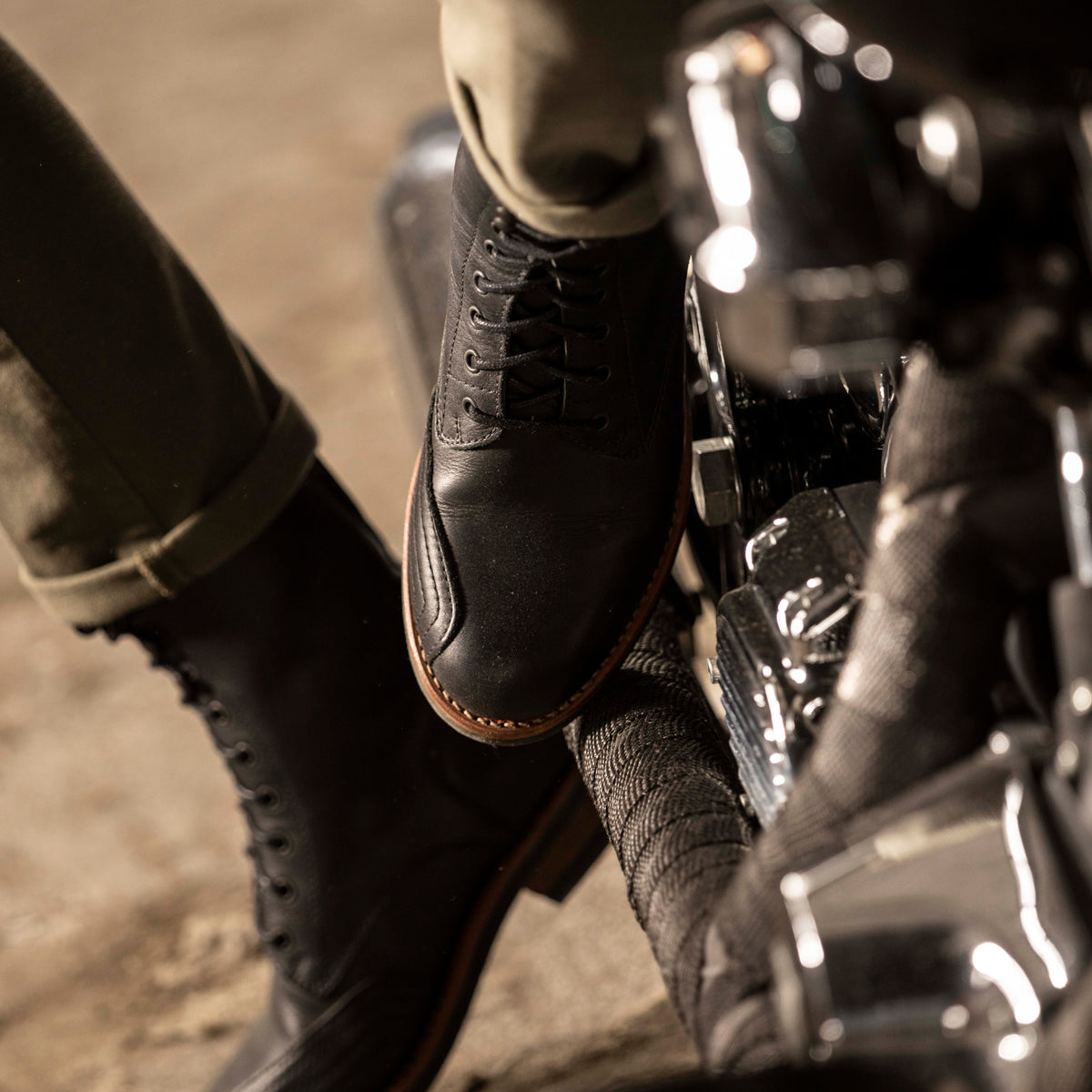
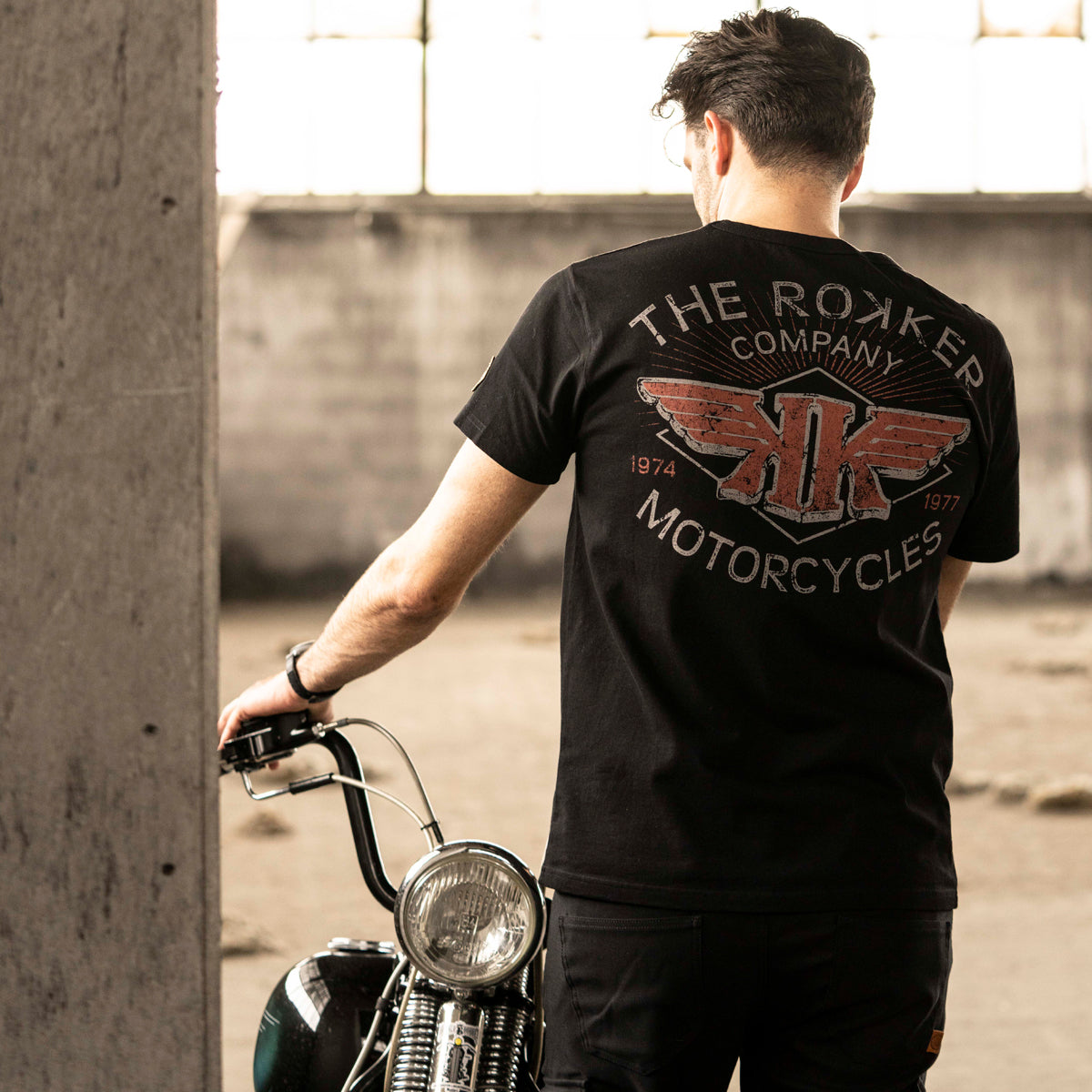
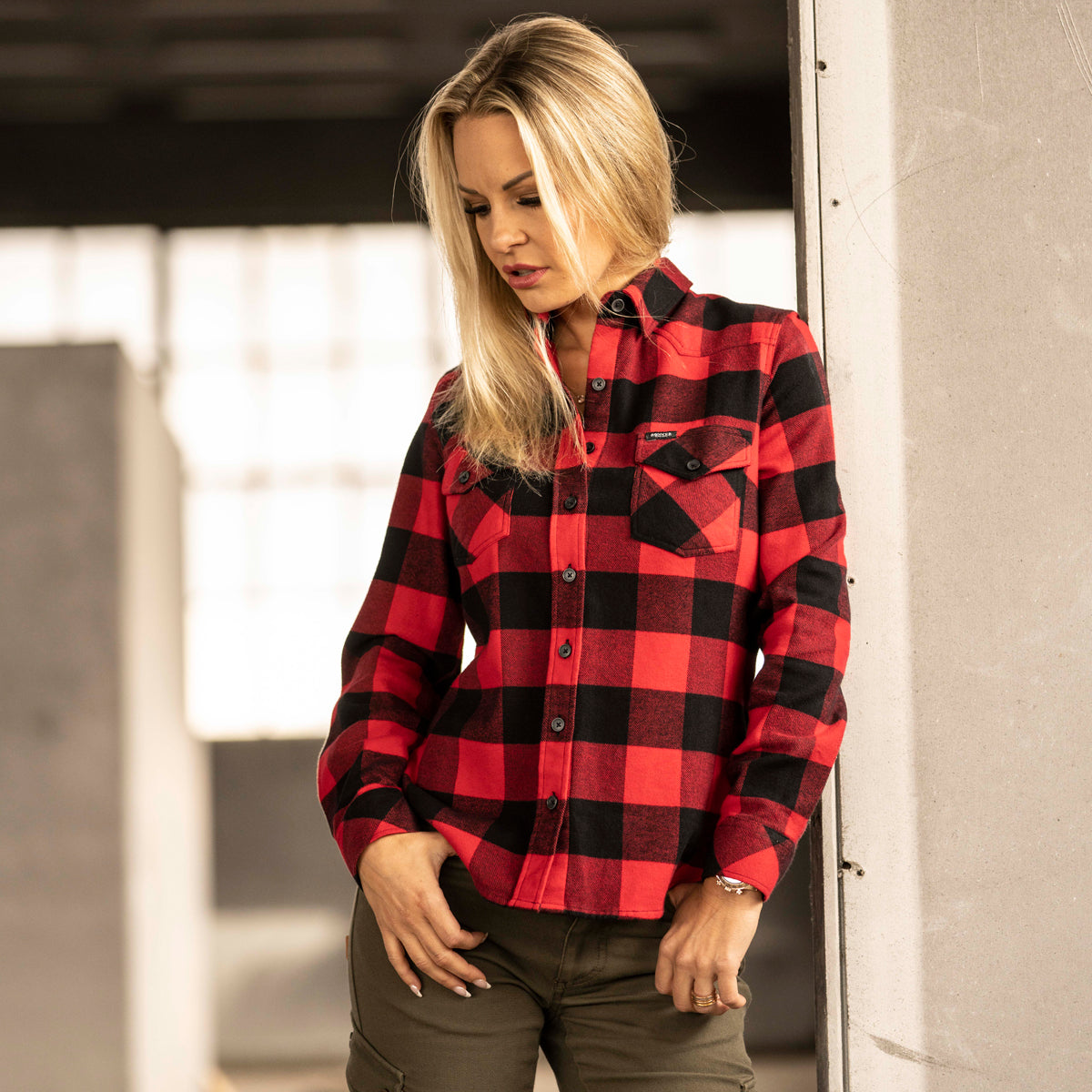
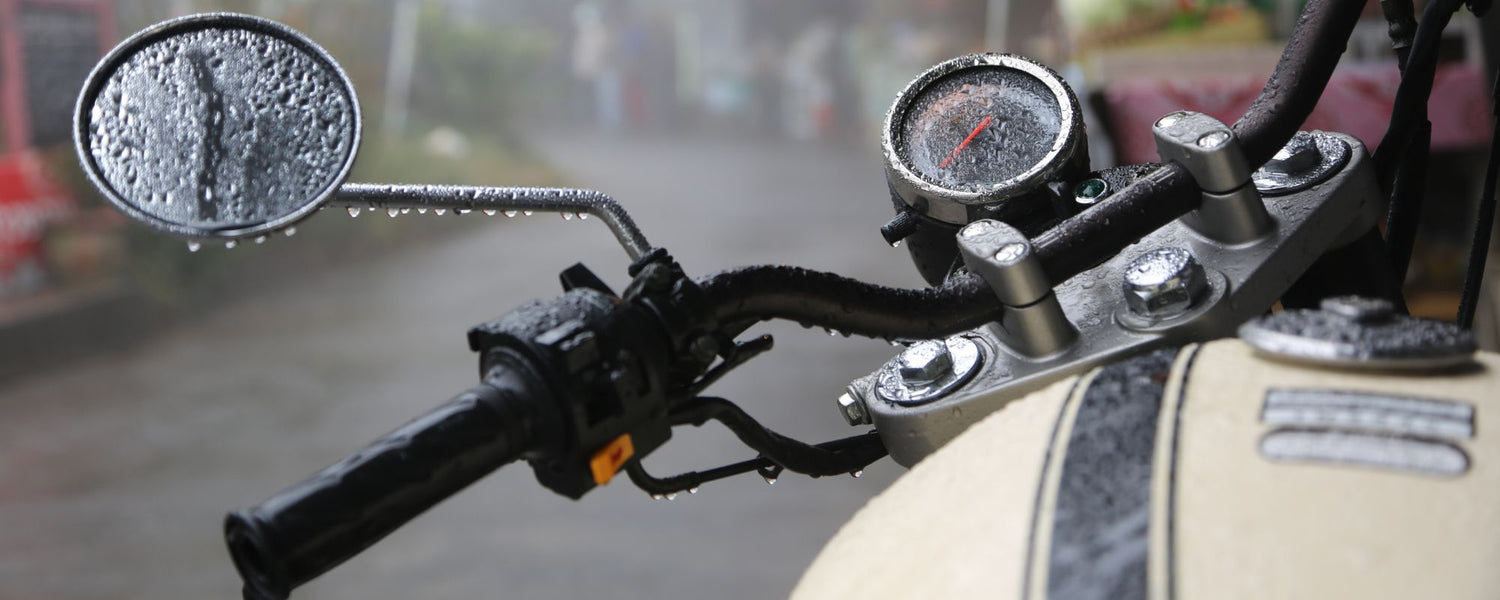
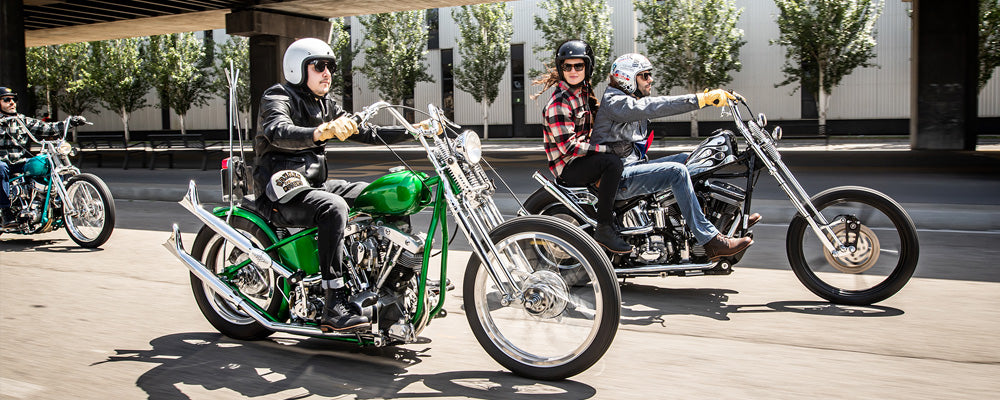
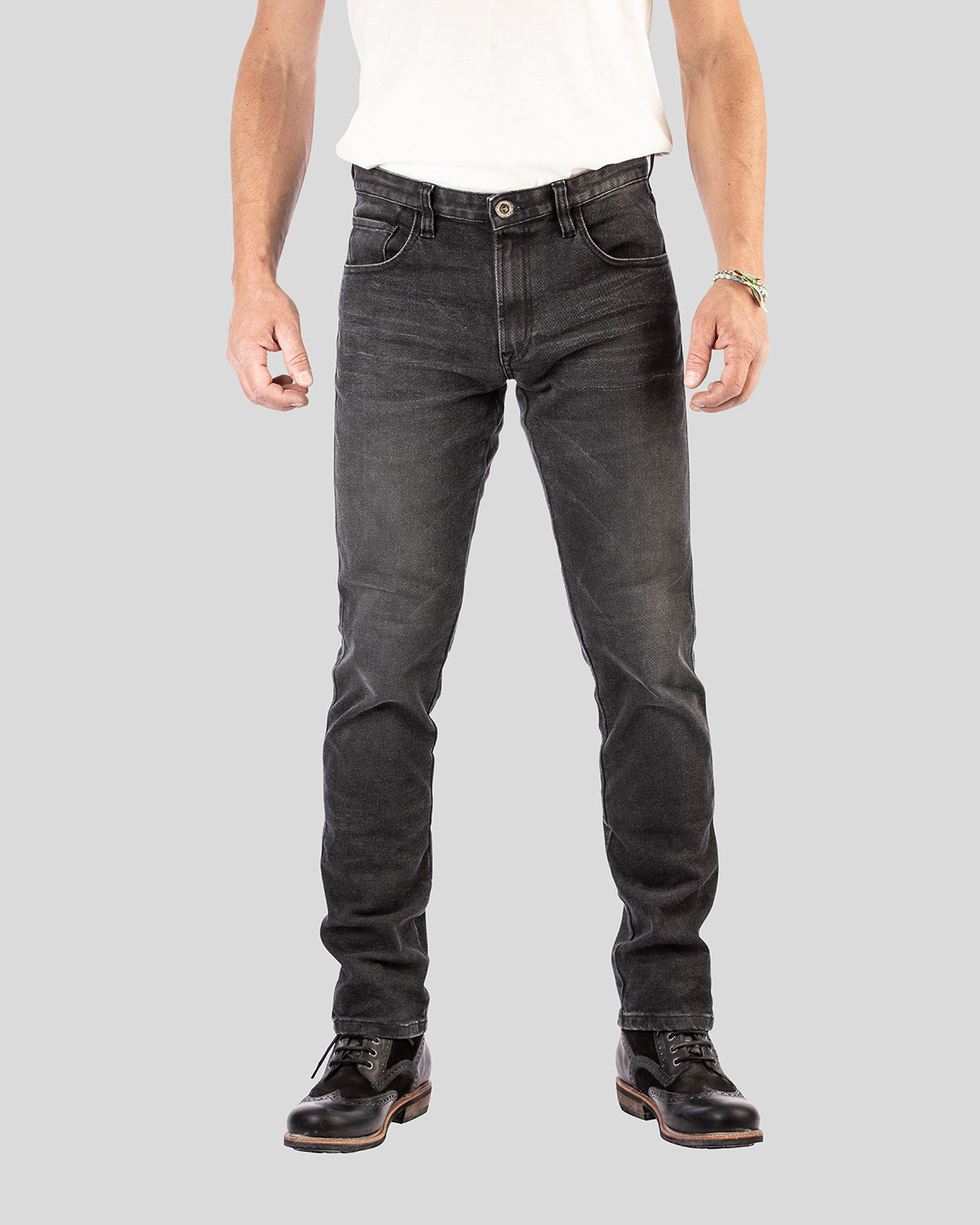
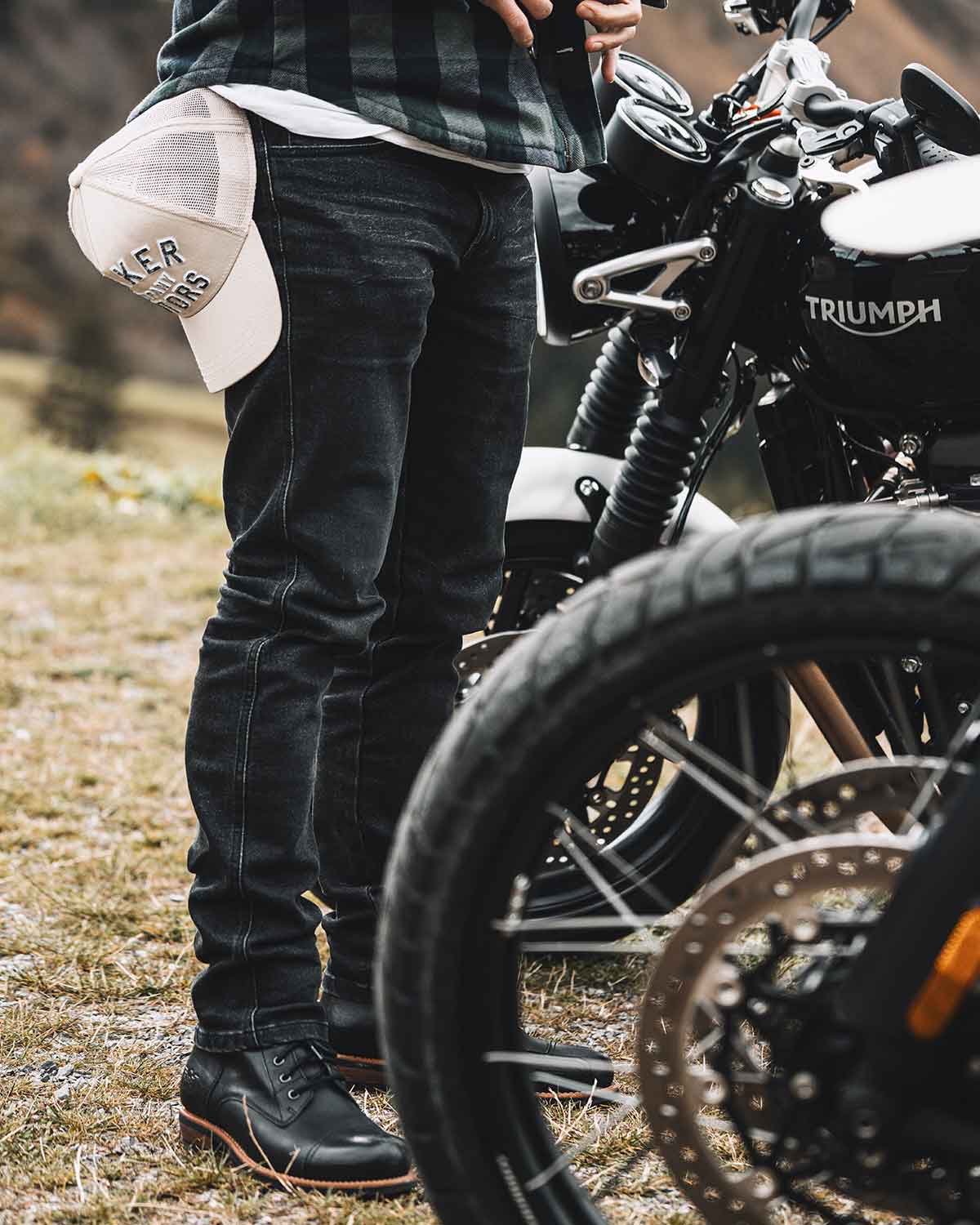
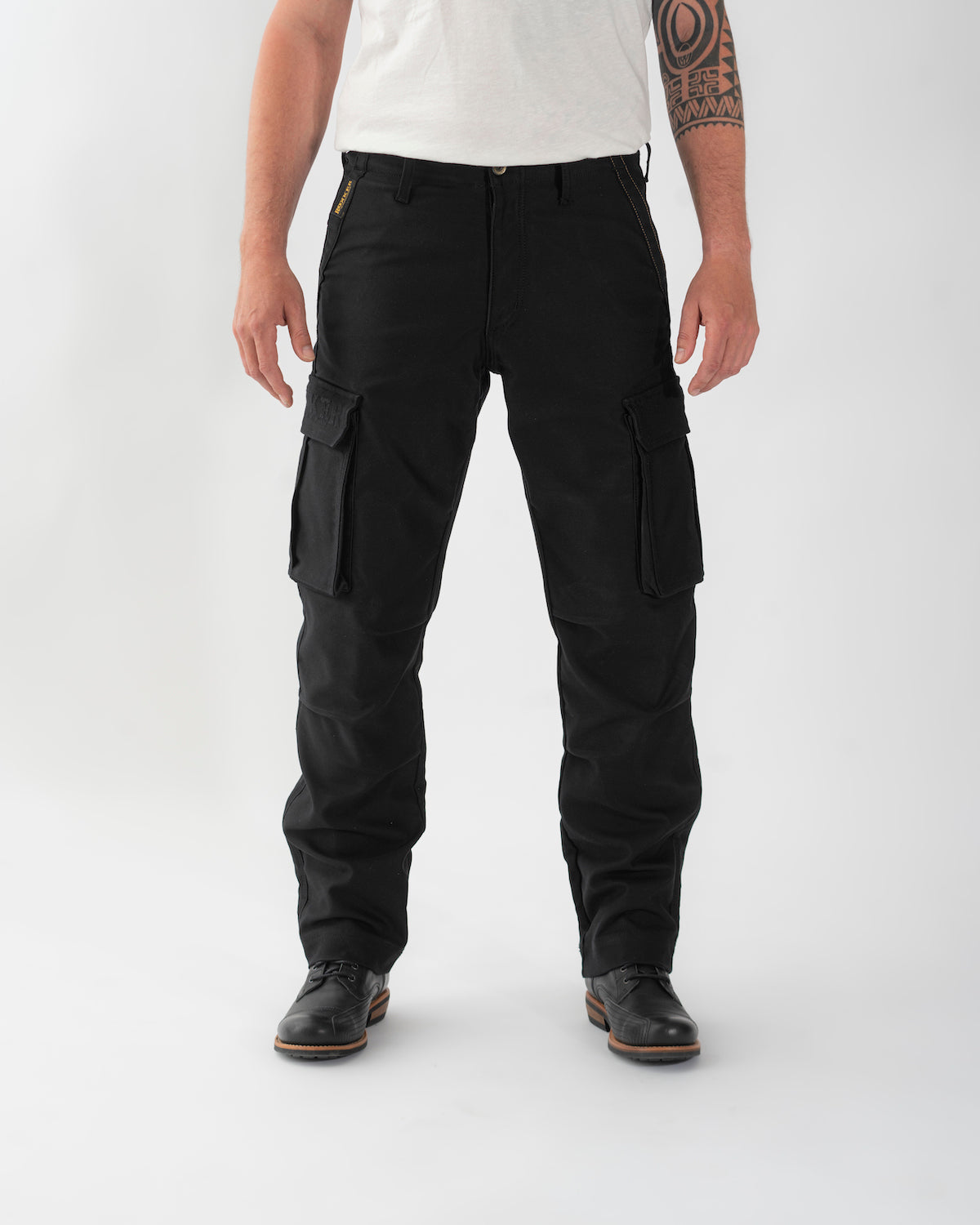
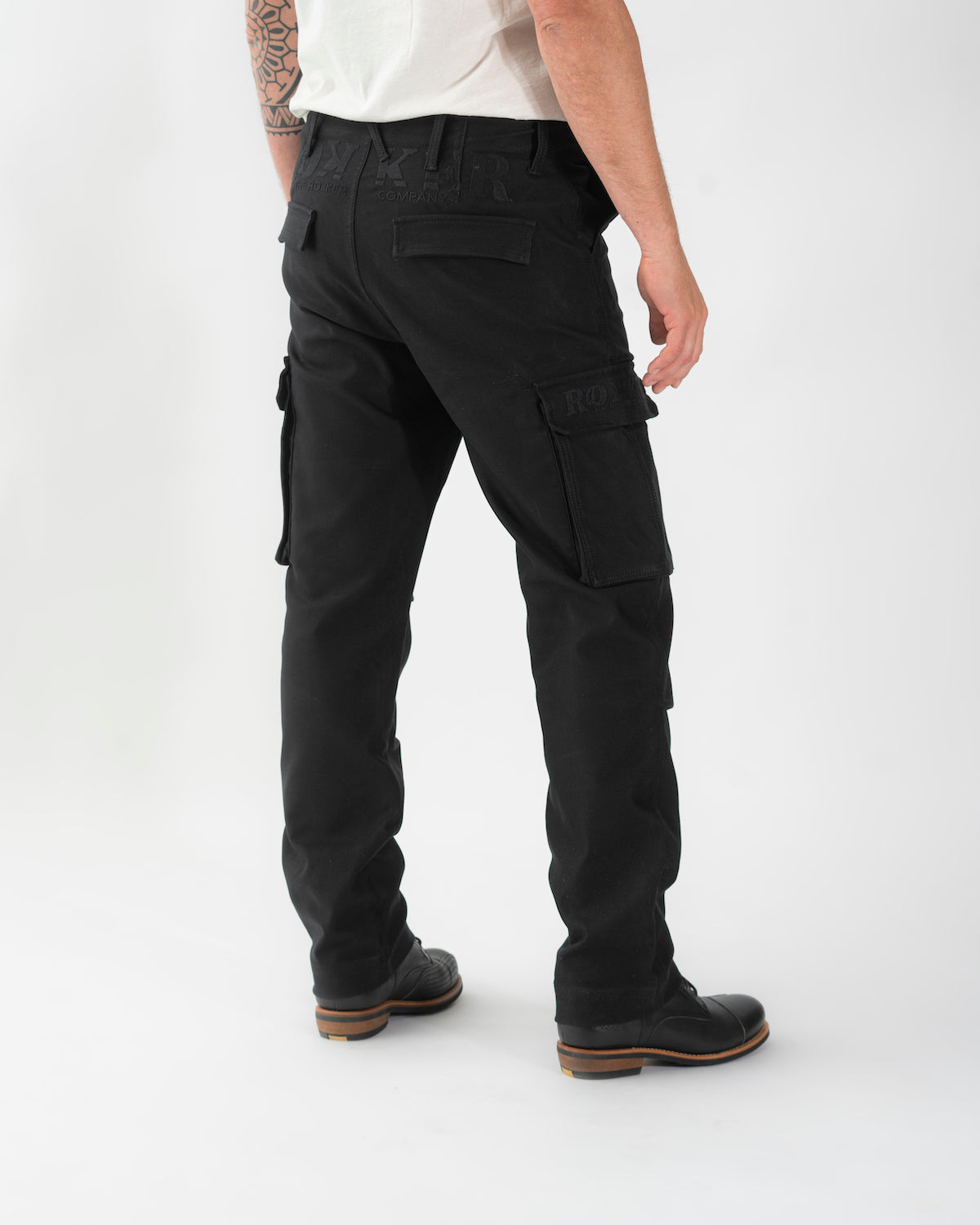
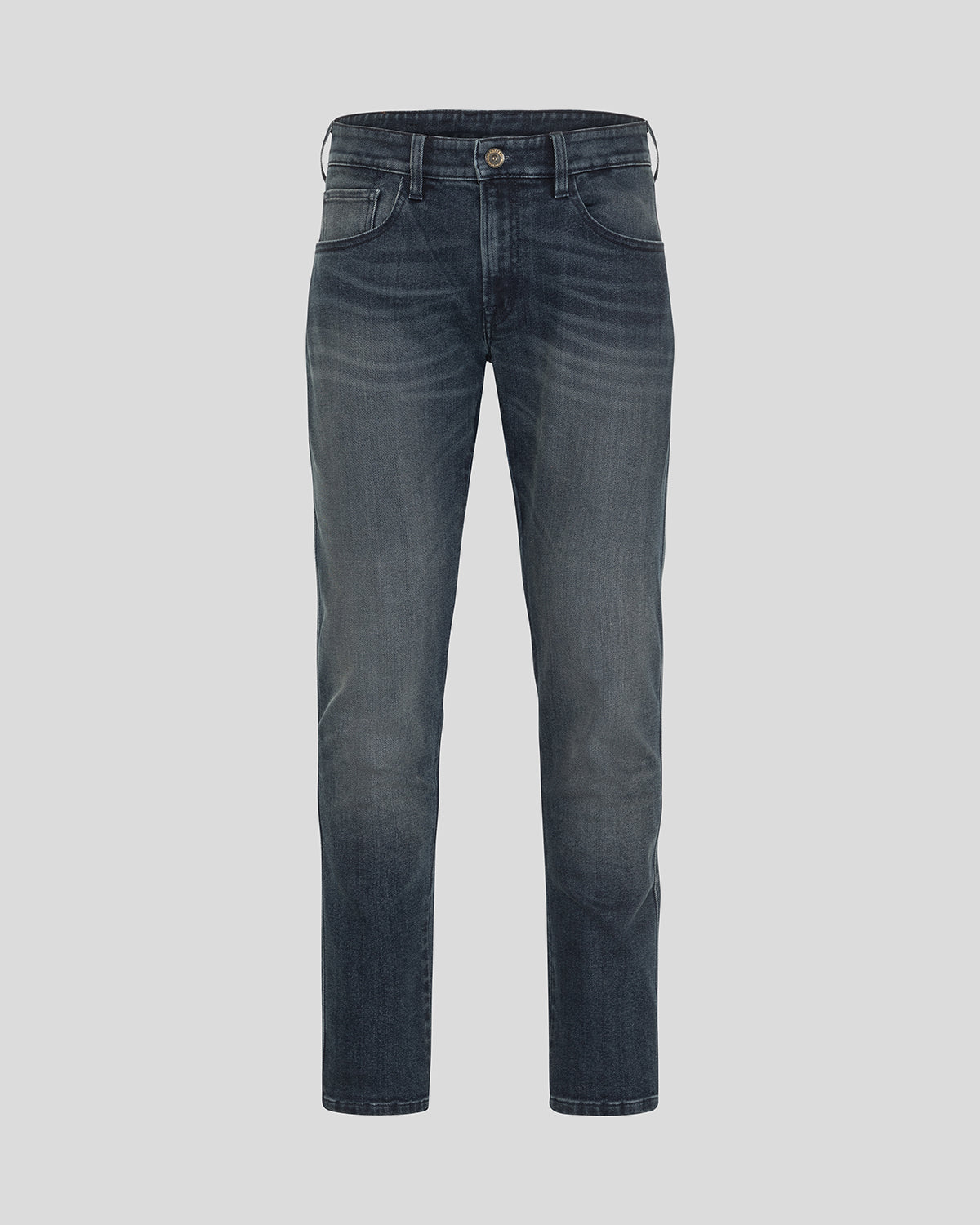
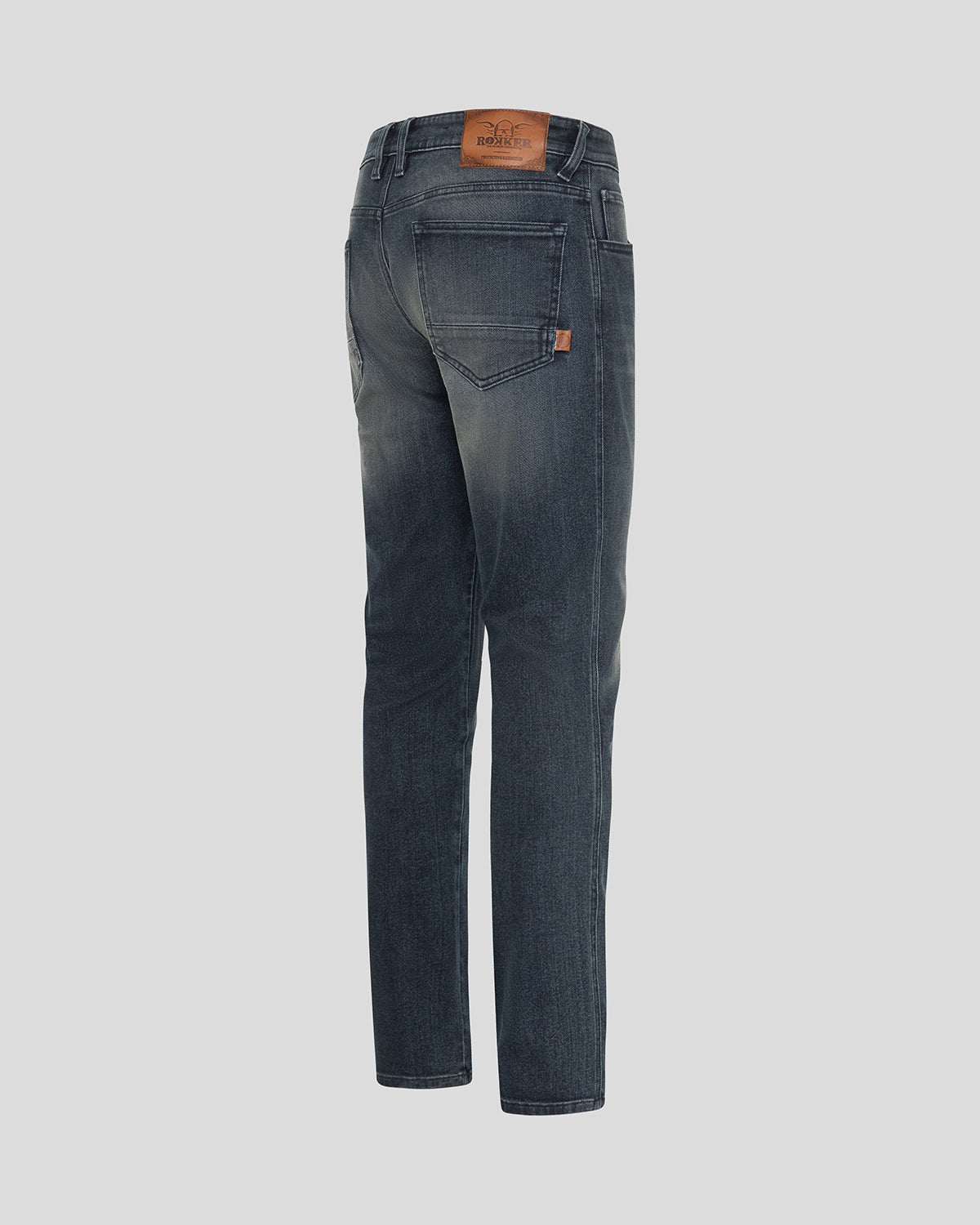
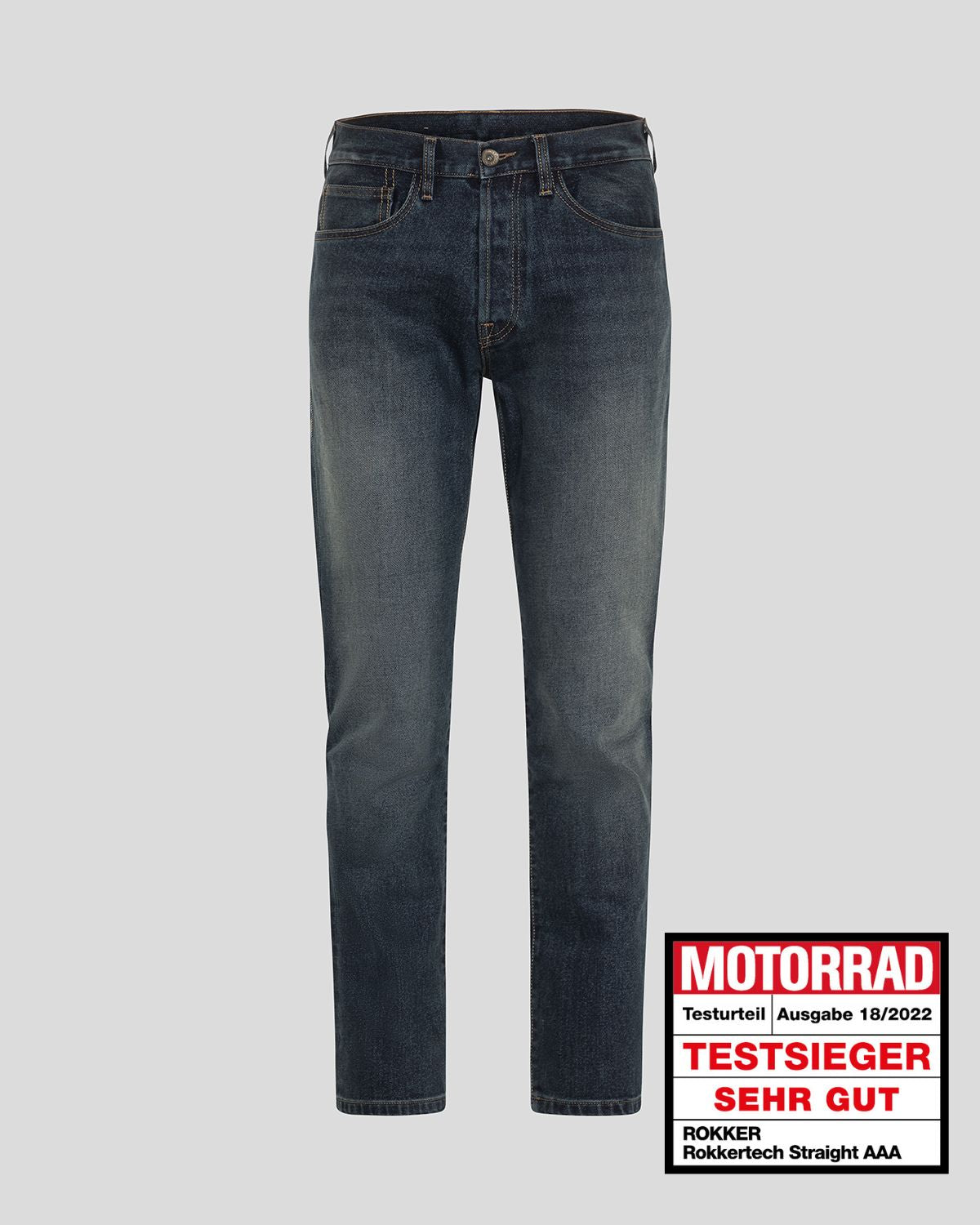
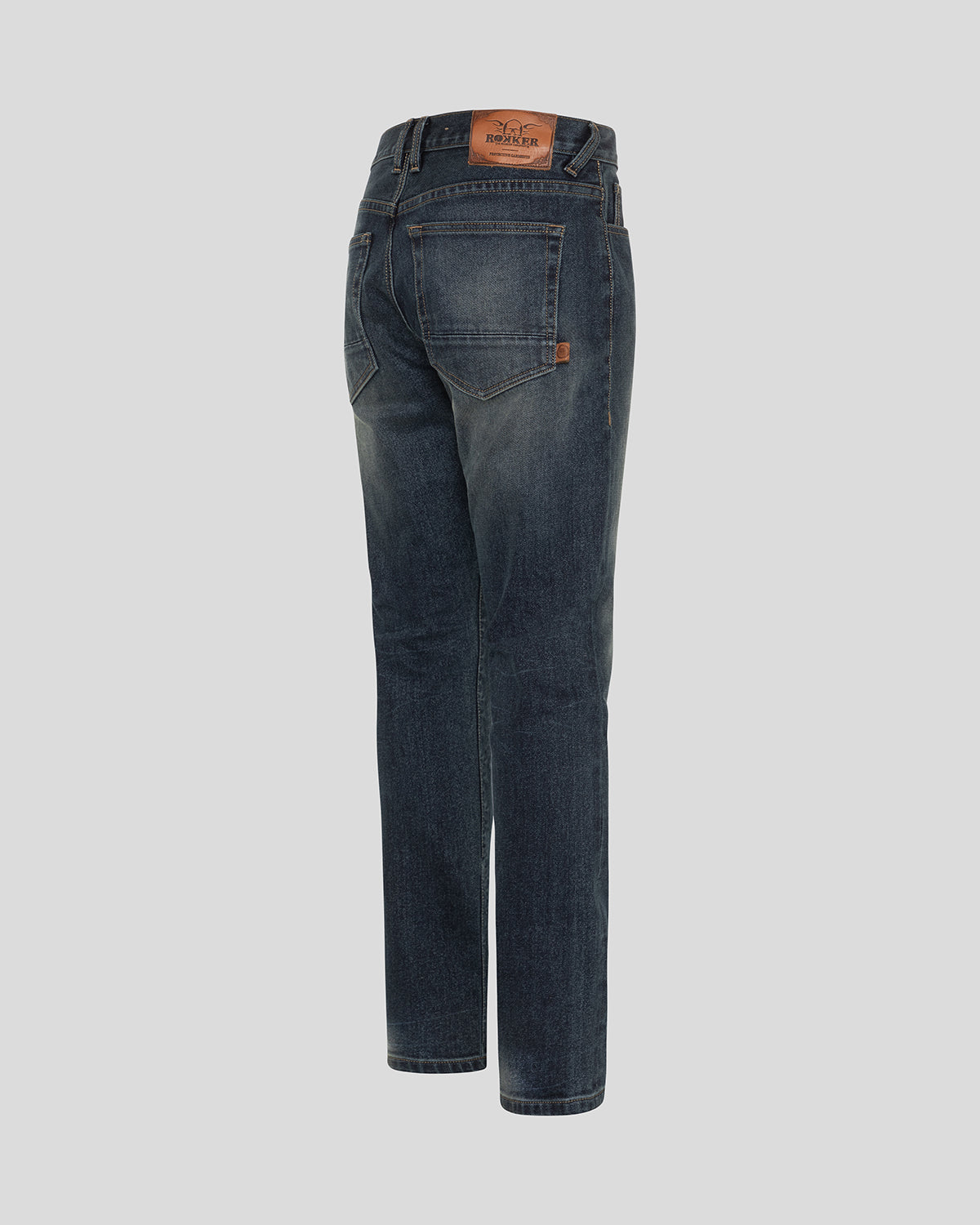
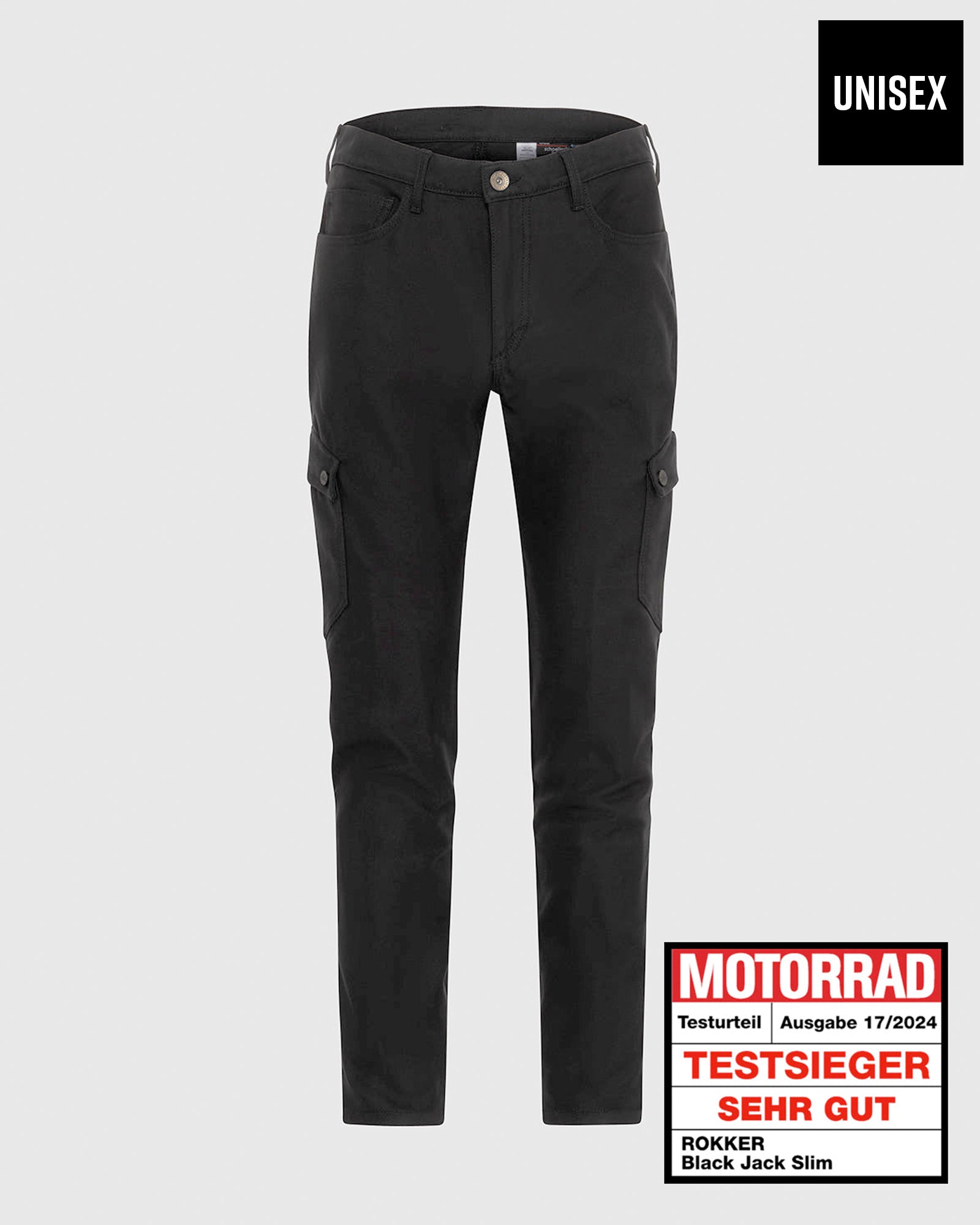
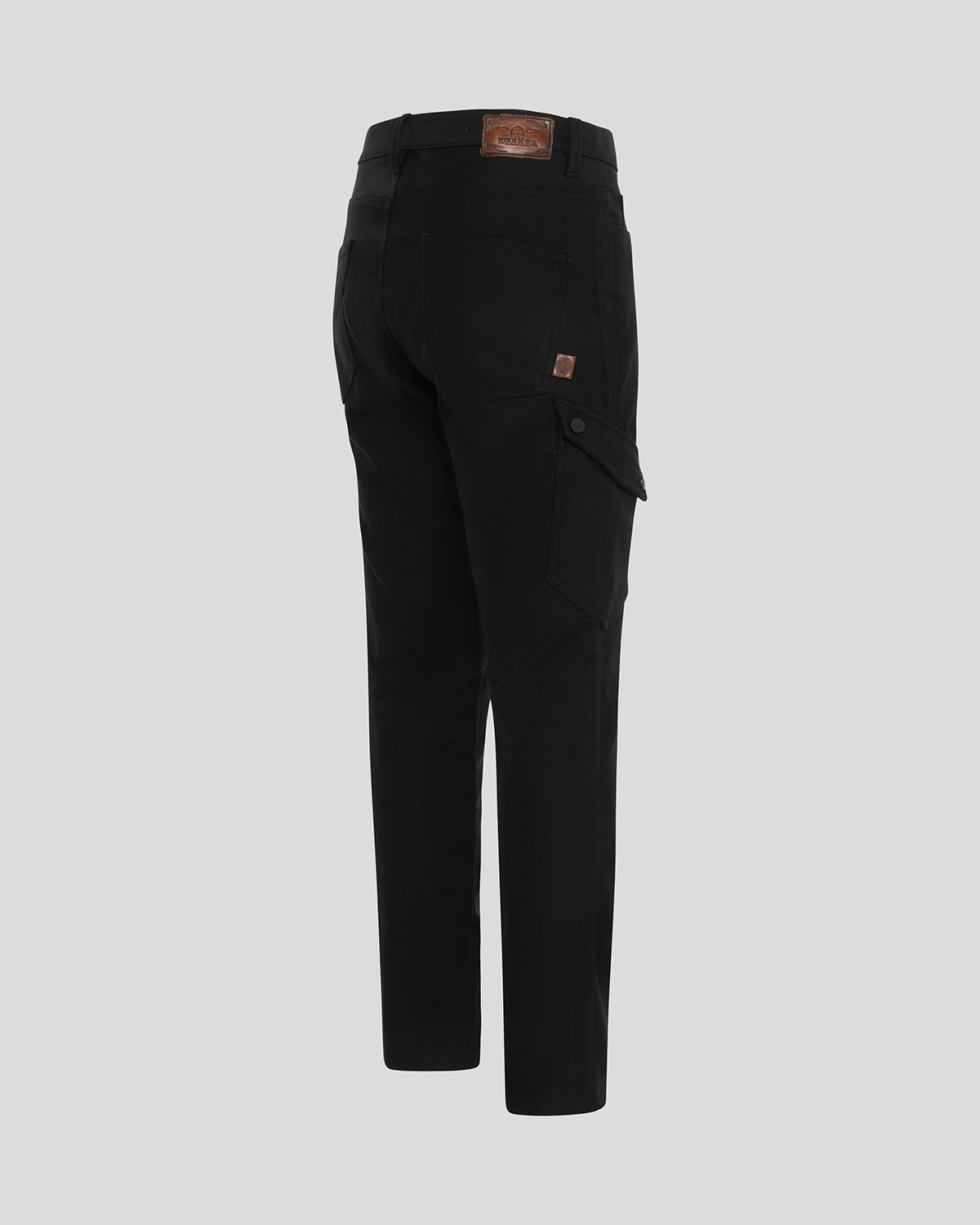
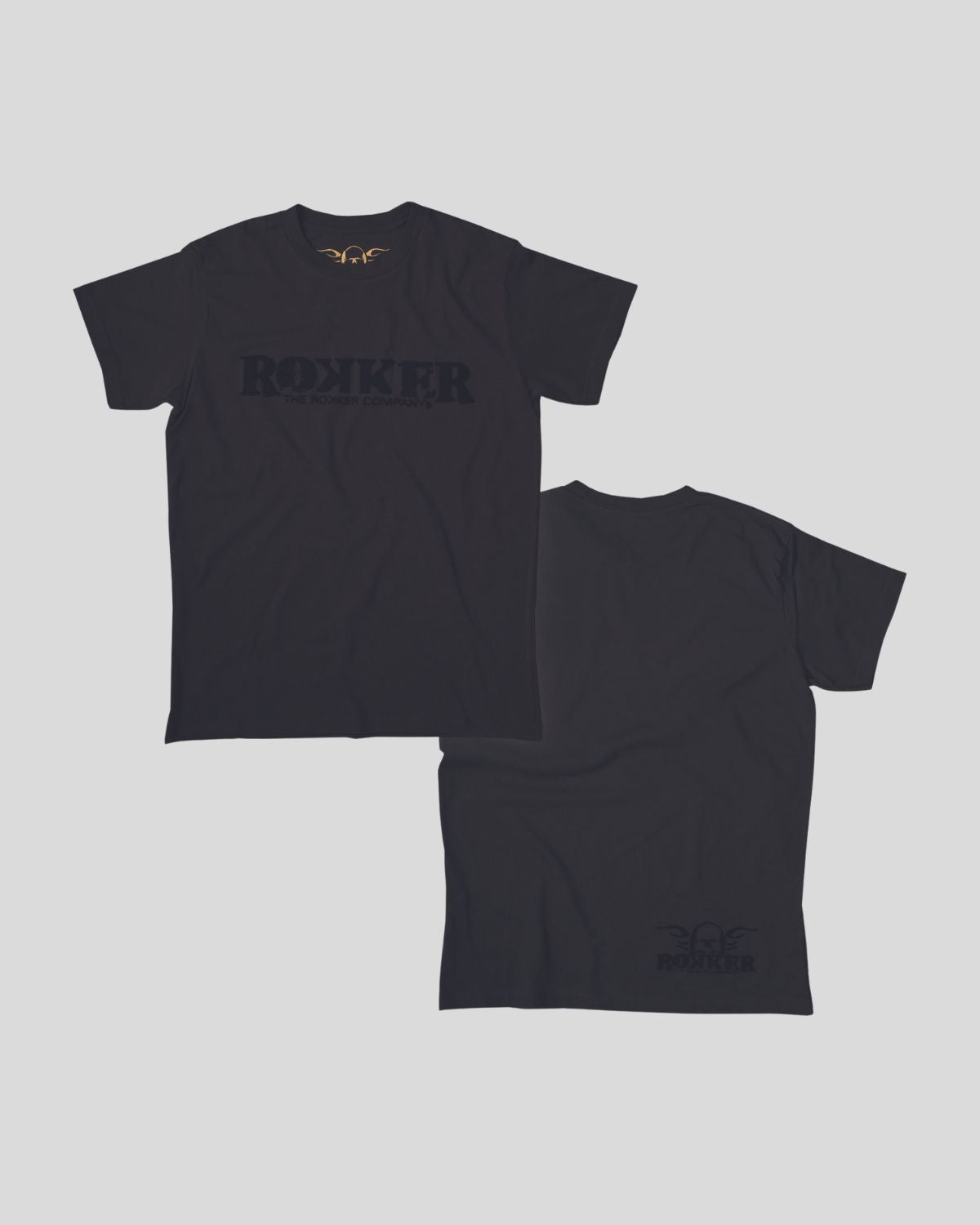
Leave a comment
This site is protected by hCaptcha and the hCaptcha Privacy Policy and Terms of Service apply.